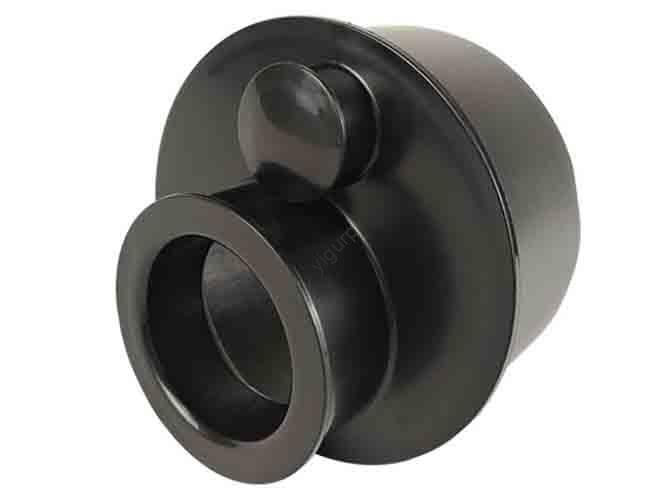When developing new products, choosing the right materials for prototype and replica parts directly affects testing accuracy, эффективность производства, и контроль затрат. This article will break down common materials, their performance comparisons, and selection strategies to help you make informed decisions.
1. Core Materials for Prototype & Replica Parts: Обзор & Ключевые черты
Below is a detailed table of 7 widely used materials, including their core advantages, typical applications, and limitations—designed to let you quickly match materials to your needs.
| Название материала | Основные преимущества | Типичные приложения | Ограничения |
| Полиуретан (Пута) | Высокая сила, good expandability; flexible/rigid options | Soft rubber parts, ABS/PC-like replicas | Lower heat resistance than high-temp materials |
| Силикон | Excellent elasticity, Легко демольд | Elastic components (НАПРИМЕР., прокладки, мягкие захваты) | Low mechanical strength; not for load-bearing parts |
| АБС | Сбалансированная сила & стойкость, легкая обработка | Structural prototypes (НАПРИМЕР., корпусы, рамы) | Poor chemical resistance to strong solvents |
| Стр (Полипропилен) | Good chemical stability, теплостойкость (~100°C) | Продовольственные детали, Легкие компоненты | Low impact resistance at low temperatures |
| ПК (Поликарбонат) | Высокая прозрачность, Сильное воздействие сопротивления | Прозрачные части (НАПРИМЕР., линзы, обложки) | Prone to scratching; higher cost than acrylic |
| Акрил (ПММА) | Превосходная прозрачность, easy polishing | Display prototypes (НАПРИМЕР., exhibition models) | Хрупкий; lower impact resistance than PC |
| Высокотемпературные материалы | Выдерживает >200° C.; maintains performance in heat | Части двигателя, high-temp tooling | Более высокая стоимость; complex processing |
2. How to Compare Materials for Specific Needs? (Contrast & Decision Guide)
Not sure whether to pick ПК против. Акрил for a transparent part, или PU vs. Силикон for a flexible component? Use these side-by-side comparisons to resolve common dilemmas.
2.1 Transparent Prototype Parts: ПК против. Акрил
| Коэффициент сравнения | ПК (Поликарбонат) | Акрил (ПММА) |
| Прозрачность | ~90% (slight blue tint) | ~92% (clearer) |
| Воздействие сопротивления | Отличный (unbreakable in most cases) | Бедный (easily cracked) |
| Сопротивление царапин | Низкий (нуждается в покрытии) | Середина (better than PC) |
| Расходы | Выше | Ниже |
| Рекомендация | For parts needing durability (НАПРИМЕР., safety covers) | For display-only parts (НАПРИМЕР., model showcases) |
2.2 Flexible Prototype Parts: PU vs. Силикон
If your project requires flexibility, просить: Do I need strength or extreme elasticity?
- Пута: Ideal for parts that need both flexibility and structural support (НАПРИМЕР., soft rubber grips for tools). It can mimic the hardness of ABS or PC, making it versatile for functional testing.
- Силикон: Better for parts that prioritize elasticity and heat resistance (НАПРИМЕР., seals for high-temp devices). Однако, its low mechanical strength means it’s not suitable for load-bearing roles.
3. 3 Key Factors to Choose the Right Material
Selecting prototype and replica materials is not about “the best material”—but the “most suitable” one. Follow this linear decision process:
- Define Performance Requirements First
Просить: Будет ли часть подвержена высоким температурам? Does it need transparency or flexibility? Например:
- High-temp environments → Choose high-temperature resistant materials.
- Display purposes → Prioritize acrylic (рентабельный) или ПК (долговечный).
- Балансовая стоимость & Время выполнения
- Бюджетный, fast-turnaround prototypes → ABS or PP (Легко обрабатывать, widely available).
- High-cost, specialized needs → PC or high-temperature materials (justify with critical performance demands).
- Consider Post-Processing Needs
- If you need polishing (НАПРИМЕР., прозрачные части) → Acrylic is easier to polish than PC.
- If you need painting or bonding → ABS adheres better to paints than PP.
4. Перспектива технологии Yigu на выбор материала прототипа
В Yigu Technology, Мы верим в выбор материала для prototype and replica parts should align with “fast validation + cost optimization.” Most clients initially lean toward over-spec materials (НАПРИМЕР., choosing PC for simple display models), which increases costs unnecessarily. Our team recommends starting with a “minimum viable material”: use ABS for structural tests, acrylic for displays, and PU for flexible simulations. As the product iterates, we then upgrade to specialized materials (НАПРИМЕР., high-temperature options) only when performance demands it. This approach cuts lead time by 30% on average and reduces material costs by 20%, while still ensuring accurate prototype validation.
Часто задаваемые вопросы: Common Questions About Prototype & Replica Materials
- Q.: Can silicone be used directly as a prototype material, or only for making molds?
А: Silicone can be used directly for prototypes—especially for elastic parts like gaskets or soft covers. Однако, it’s not suitable for load-bearing or high-strength applications due to its low mechanical strength.
- Q.: Which material is better for food-contact prototype parts: PP or ABS?
А: PP is the better choice. It has good chemical stability, is non-toxic, and meets food safety standards (НАПРИМЕР., FDA approval). АБС, напротив, may release harmful substances when in contact with food or high temperatures.
- Q.: How do I improve the heat resistance of a prototype if I’m using PU?
А: You can add heat-resistant additives to PU during processing (НАПРИМЕР., glass fiber or ceramic fillers) to 提升 its heat resistance by 10–20°C. For parts needing >150°C resistance, однако, it’s better to switch to dedicated high-temperature materials.
